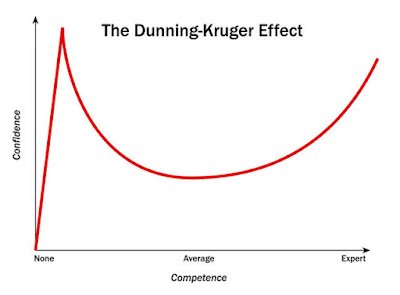Topics: Holograms, Optical Physics, Science Fiction, Star Wars
Display creates 3D images that can be viewed from many angles, Tim Wogan, Physics World
Topics: Holograms, Optical Physics, Science Fiction, Star Wars
Display creates 3D images that can be viewed from many angles, Tim Wogan, Physics World
I remember a line from the X-Files. One of the Navajo characters said something like "truth never stays buried. it always finds a way to the surface."
In this news article, literally.
In the summer of 1860, half a century after the United States banned the trans-Atlantic slave trade, Capt. William Foster sneaked 110 African slaves into Mobile, Ala. — and knew that the floating evidence of the illegal deed could get him killed.
The trip was more part of an obscene bet than any sort of profit-making scheme, but the Clotilda, the ship that made the months-long journey, held the telltale signs that it was an illegal slaver: containers for water and food, and the lingering stench of urine and feces and vomit and blood.
If caught, Foster and his crew could be imprisoned or executed, so they found a remote section of the Mobile-Tensaw Delta and torched the ship, igniting a mystery that would endure for a century and a half.
What happened to the Clotilda, the last ship to bring slaves to the United States?
If you're looking for a good ripped-from-the-headlines ghost story to write for Black History Month, here you go.
 |
| Credit: Mark Ross |
Topics: Astrophysics, Black Holes, Cosmology, General Relativity
The Puzzle of the First Black Holes, Priyamvada Natarajan, Scientific American
| Mars fission power system concept in the Kilopower project is shown in this undated NASA handout photo released on January 9, 2018. Courtesy NASA/Handout via REUTERS |
Topics: Mars, NASA, Nuclear Power, Planetary Science, Space Exploration
U.S. tests nuclear power system to sustain astronauts on Mars, Will Dunham, Reuters Science
 |
| Semiconductor nanorods will help monitor neural activities in the future. Courtesy: Y Kuo and S Sasaki / University of California, Los Angeles |
Topics: Biology, Modern Physics, Nanotechnology, Semiconductor Technology
Semiconductor nanosensor measures membrane potential, Belle Dumé, Nanotechweb.org
 |
| Creativity-Onliine.com: Super Bowl Ad |
Topics: Commentary, Existentialism, Politics
[1] Paul Ryan's Unified Republican Government Is Coming Apart at the Seams, Jay Willis, GQ
[2] FBI investigating whether Russian money went to NRA to help Trump, Peter Stone, Greg Gordon, McClatchy News
[3] Gun Control Is “Racist”? The NRA Would Know, Adam Winkler, New Republic
[4] The Isis Papers: The Keys to the Colors, Dr. Francis Cress Welsing
[5] "Lowest white man" related links:
Did LBJ Advocate: 'Convince the Lowest White Man He's Better Than the Best Colored Man'? Snopes
The Lowest White Man, Charles M. Blow, New York Times
How LBJ Foresaw the Election of Donald Trump, Derek Beres, Big Think
 |
| An example of the spectrum from two laser frequency combs, with their evenly spaced emission lines. (Courtesy: ESO). |
Topics: Astronomy, Astrophysics, Exoplanets, Optics, Space Exploration
Optical ‘astrocomb’ could boost searches for Earth-like planets, Keith Cooper, Physics World
 |
| Credit: NIST |
Topics: Bose-Einstein Condensate, Modern Physics, Quantum Mechanics
Bose–Einstein condensation in the blink of an eye, Ashley G. Smart, Physics Today
This edited volume will offer an opportunity for authors to investigate the ways in which blackness is reimagined in both mainstream and independent comics. Specifically, I propose responding to the following questions: What are the ways in which heroism is redefined by black characters? How are black futures reimagined? What gendered arguments are made through this medium? What are the challenges in presenting to black audiences in this largely white genre? How do the creators depict the continent of Africa and/or communities in the African Diaspora? How are black bodies presented in graphic comics and novels? Finally, how are themes of social justice specific to black communities presented in this type of medium?
This volume would address the above questions in addition to the themes indicated below.
All submissions should include a 200-word abstract. Finalized contributions should be sent as Microsoft Word and/ or JPEG attachment by March 31st, 2018. Articles will be in English. Please send an email to byates@sju.edu for instructions to submit via Dropbox. In terms of submission requirements, utilize FIRE!!!’s style guide located at http://fire-jbs.org/ under the author’s tab.
 |
| Pulsars spin rapidly while emitting powerful beams of radiation.Credit: Dana Berry/NASA |
Topics: Astrophysics, Instrumentation, International Space Station, NASA, Space Exploration
NATIONAL HARBOR, Maryland
NASA test proves pulsars can function as a celestial GPS, Alexandra Witze, Nature
HAPPY MARTIN LUTHER KING JR DAY!
My wife and I were in the local MLK Walk today. We also donated suits and coats! Last year I was obese and hated walking to the mailbox. Losing 100lbs had made a huge impact on my life.
| Image Source: AJC link below [1] |
Topics: Civics, Civil Rights, Human Rights, Martin Luther King, Star Trek
[1] Photos: Martin Luther King statues around the country (and beyond), Pete Corson - The Atlanta Journal-Constitution, [accessed] 12 January 2018
[2] The King Center: The King Philosophy, [accessed] 12 January 2018
Related links:
123 Of The Most Powerful Martin Luther King Jr. Quotes Ever, Hannah Hutyra, Keep Inspiring dot me, [accessed] 12 January 2018
The Manchurian Candidate, Wikipedia [accessed] 12 January 2018
50 years later, 'The Other America' MLK described in Grosse Pointe still exists, Ken Coleman, Detroit Free Press, [accessed] 14 January 2018
#P4TC Related links:
Dr. King: Science Advocate... January 20, 2014
Requiem for Moab... April 14, 2017
The last 18 months in my life have been unpredictable, and not in good ways. Now that my health issues seem to have quieted down, it's past time I posted here.
As a freelance reviewer for Foreword Reviews magazine, I get to read free books of above-average quality from independent presses. The standout- read for last year was An Unkindness of Ghosts by Rivers Solomon. You can find my review here: https://www.forewordreviews.com/reviews/an-unkindness-of-ghosts/
Solomon is amazing. It seems as though this young writer distilled the essence of Octavia Butler's work and added personal perspective; what resulted is a wonder, and more than just a mixing. This novel deserves all the awards and then some; the sad and likely fact is that it probably will go mostly unnoticed.
Please check it out. If you love it, talk it up.
 |
| Image Source: Psychology Today link below |
Topics: Civics, Commentary, Existentialism
The next trilogy in the Darkside Universe is nearly completed. My intention is to get all three volumes published simultaneously and I'm going to need help.
The Archangel X Trilogy continues the saga of the Darkside Trilogy, following the extraordinary community of African Americans who discovered the means to beat NASA to the moon and live there secretly before Neil Armstrong arrived. The three volumes are Quarantine, Enmity, and Enlightenment, with the third installment over half way completed.
Please take a look at my GoFundMe campaign and see if it's something you can contribute to. There are Premiums for those who contribute to the campaign. Please give it serious consideration, and thank you in advance for checking it out. Thank you so much for your consideration!
| Cyclones swirl at Jupiter's south pole in this photo from NASA's Juno spacecraft. Credit: Betsy Asher Hall/Gervasio Robles/NASA/JPL-Caltech/SwRI/MSSS |
Topics: Jupiter, NASA, Planetary Science, Space Exploration
'Totally Wrong' on Jupiter: What Scientists Gleaned from NASA's Juno Mission
Hanneke Weitering, Space.com
 |
| A genetically engineered E.coli. The small white structures are gas vesicles. ANUPAMA LAKSHMANAN/CALTECH |
Topics: Biology, Genetics, Research
Scientists engineer sound-reflecting bacteria, Andrew Masterson, COSMOS Magazine
 |
| In Star Trek, the starship Enterprise encounters an alien Dyson Sphere. On Earth, NASA could detect one with its next-gen telescopes, astrobiologists suggest. CBS VIA GETTY IMAGES |
Topics: Astrobiology, Astrophysics, Dyson Sphere, Exoplanets, NASA, SETI
Use new telescopes to scout for ET tech, astrobiologists tell NASA Richard A. Lovett, COSMOS Magazine